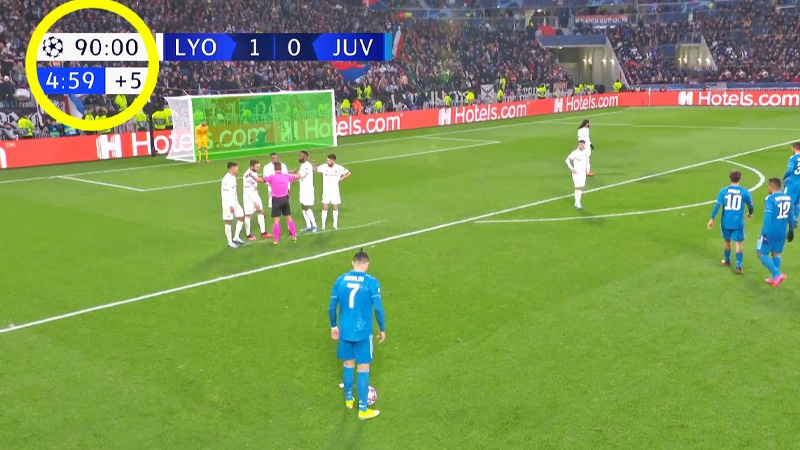Soccer, also known as football in many parts of the world, is a captivating sport that enthralls millions of fans globally.
Behind the fast-paced action on the field lies a set of well-defined rules that govern the game, including the vital aspect of time management—the Soccer Clock Rules.
In this intriguing sport, time plays a crucial role in determining match outcomes and adds an element of suspense to the game.
The soccer clock is designed to keep track of the duration of each half, ensuring fair play and equal opportunities for both teams.
Additionally, the concept of stoppage time, also known as added time or injury time, compensates for significant stoppages that occur during play, further enhancing the game’s integrity.
This article explores the intricacies of Soccer Clock Rules, shedding light on how time contributes to the excitement and drama that have made soccer a beloved sport across cultures.
Soccer Clock Rules
Soccer, also known as football in many countries, is a popular sport played worldwide. The game is governed by several rules, including specific regulations regarding the clock and time management.
Here are the soccer clock rules:
Regulation Play Time
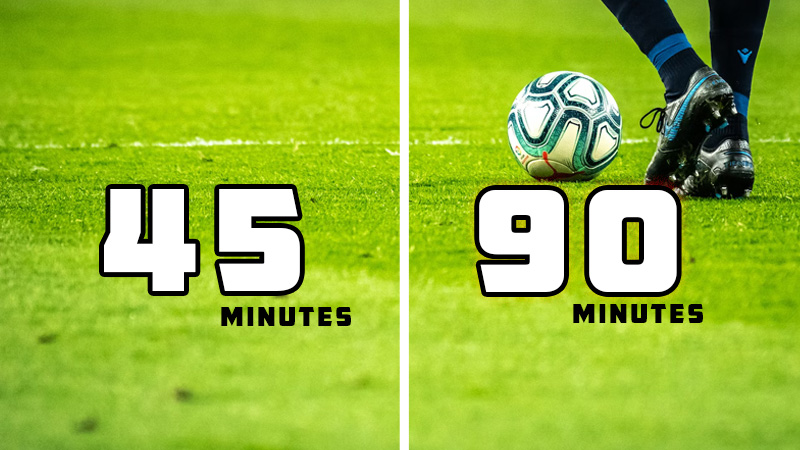
A standard soccer match consists of two halves, each lasting 45 minutes. The total duration of regulation play is 90 minutes.
This time is split into two equal periods, with a halftime break in between. The referee keeps track of the time and signals the end of each half.
Injury Time (Added Time or Stoppage Time)
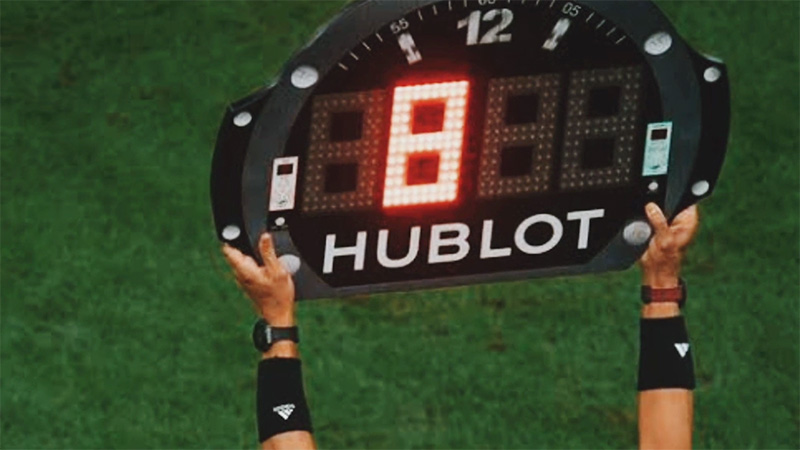
In soccer, the clock does not stop for minor stoppages, such as substitutions or players retrieving the ball from the stands.
As a result, the referee adds extra time to compensate for significant stoppages that occur during each half.
This is commonly referred to as “injury time” or “added time.” The additional time is at the discretion of the referee and is usually indicated at the end of each half.
Halftime
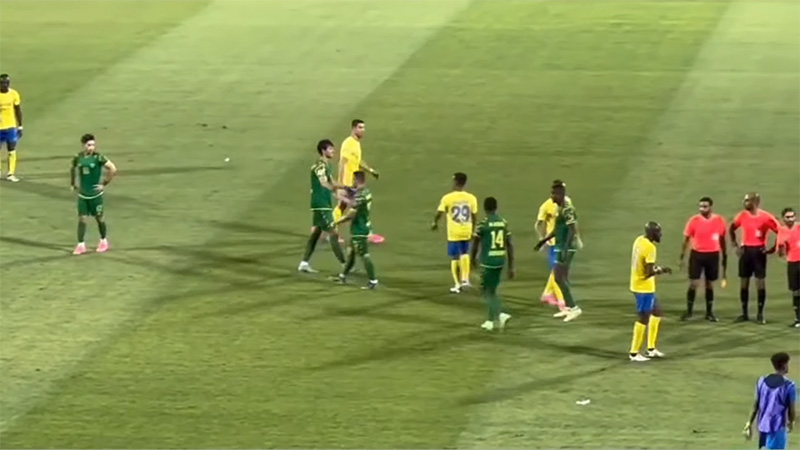
After the first 45-minute half, there is a halftime break. This interval typically lasts for 15 minutes, providing players a chance to rest, rehydrate, and receive tactical instructions from their coaches.
Stoppage Time Signaling
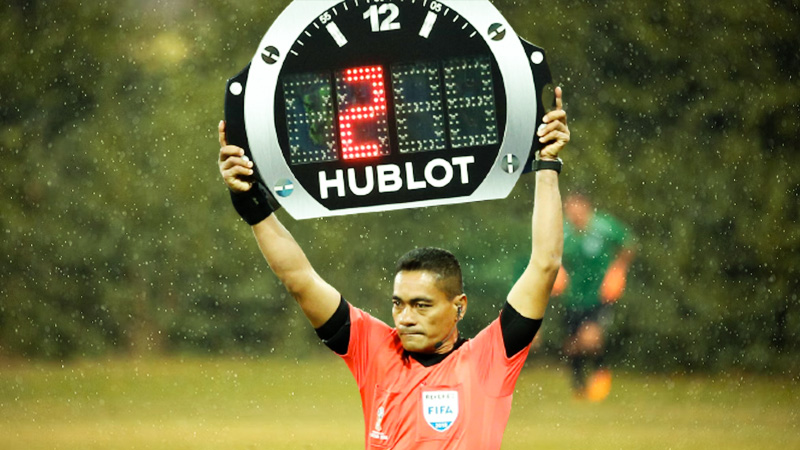
The referee is responsible for indicating the amount of injury time added at the end of each half. This is done by raising a board displaying the number of minutes that will be played beyond the initial 45 minutes.
The time displayed on the board is considered the minimum amount of injury time to be played.
Game Clock Control
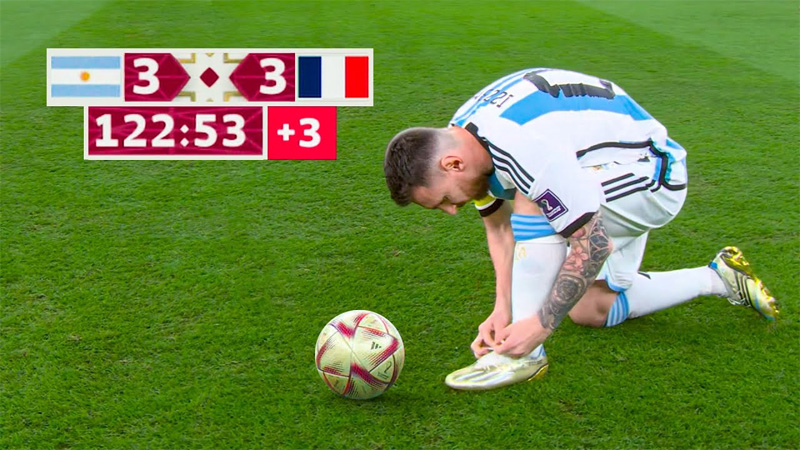
The official time is kept by the referee and is displayed on a large clock at the side of the field, visible to players, officials, and spectators. This clock is sometimes referred to as the “game clock.”
The referee’s timekeeping is considered authoritative for the match.
End of the Game
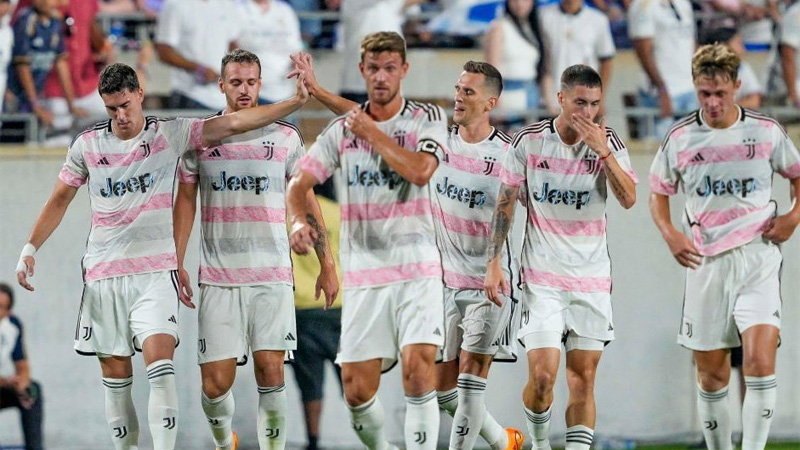
The match ends when the referee signals the conclusion of the second half, including any additional injury time that was added.
The final result is determined by the number of goals scored during the regulation 90 minutes and injury time.
These clock rules help maintain fair play and ensure that matches are conducted within a set time frame.
Soccer’s time management adds an element of suspense, as players and fans eagerly anticipate the final whistle, especially when the scoreline is close.
The timing rules also account for stoppages in play, making sure that lost time is compensated fairly for a balanced and competitive game.
Why Does The Clock Not Stop In Soccer?
The decision not to stop the clock in soccer is rooted in several reasons, all of which contribute to the unique flow and tradition of the game.
Here are the key reasons why the clock does not stop in soccer:
Continuous Play
Soccer is known for its fluid and continuous play, which makes it distinct from many other sports. By not stopping the clock, the game maintains its natural rhythm and allows for uninterrupted action.
This adds to the excitement and unpredictability of the sport, as teams must strategize and adapt to changing situations on the fly without extended breaks.
Tradition and Fairness
The tradition of not stopping the clock in soccer has been maintained for well over a century. It is considered part of the essence of the game.
This rule applies equally to all teams, ensuring fairness in the competition. Each team has an equal opportunity to play the full 90 minutes, plus added time, without interruptions or time manipulation.
Game Management
The absence of a stopped clock places the responsibility for time management on the referee. The referee becomes the official timekeeper and has the authority to add injury time at the end of each half to account for significant stoppages.
This system is considered more subjective but allows for human judgment to account for various stoppages appropriately.
Player Safety
Stopping the clock for every minor stoppage could lead to extended periods of rest for players, potentially disrupting their physical readiness and increasing the risk of injury upon resuming play.
By keeping the clock running, soccer encourages players to maintain their fitness levels and minimizes the potential for strategic time-wasting tactics.
Global Standardization
Soccer is played and enjoyed by millions of people worldwide. The uniformity of the game’s rules, including the no-clock-stopping principle, promotes consistency and ease of understanding across different leagues, countries, and age groups.
Broadcast Considerations
In the context of televised matches, continuous play adds to the viewer experience. Broadcasters can predict the approximate duration of a match, making it easier to schedule programming around games.
The excitement of not knowing exactly when the final whistle will blow adds to the drama and suspense for both spectators in the stadium and those watching from home.
Overall, the decision not to stop the clock in soccer is deeply ingrained in the sport’s history, maintaining its character and ensuring a fair and continuous playing experience for all participants and fans alike.
How Do You Read A Soccer Clock?
In soccer, reading the clock correctly is essential for players, coaches, officials, and fans to understand the timing of the match accurately.
The soccer clock typically consists of two main components: the game time and the injury time or added time.
Here’s how to read a soccer clock:
Game Time
The game time represents the minutes and seconds that have elapsed in each half of the match. It starts at 00:00 and continues to count up incrementally until it reaches 45:00, which signifies the end of the first half.
After that, it resets to 00:00 for the second half and counts up again until it reaches 90:00, marking the end of regulation play.
The game time is displayed prominently on scoreboards in the stadium and on television broadcasts, allowing everyone to track the progress of the match.
Injury Time (Added Time or Stoppage Time):
Injury time, also known as added time or stoppage time, is the additional time played at the end of each half to compensate for significant stoppages that occurred during the regular 45 minutes.
This time is determined by the referee based on various factors, such as injuries, substitutions, and other delays that temporarily halt play.
The referee signals the amount of injury time by raising a board with the indicated number of minutes, and this time is added to the game clock at the end of the half.
Halftime Break:
At the end of the first half (45:00), there is a halftime break that typically lasts for 15 minutes.
During this interval, players leave the field to rest and receive instructions from their coaches.
The halftime break is also an essential time for broadcasters to analyze the first half and provide commentary.
End of the Match:
The match concludes when the second half’s game time (90:00) and the injury time have been completed. The referee signals the end of the match by blowing the final whistle.
The result is determined by the number of goals scored during the 90 minutes plus injury time, and the team with the most goals is declared the winner.
Understanding how to read a soccer clock is crucial for following the game’s progress and knowing when it will end.
It allows players and teams to manage their time effectively, make strategic decisions, and adapt their gameplay as the match progresses.
Additionally, for fans, knowing the time left in a match can create excitement and anticipation, especially when the score is close or when injury time offers a chance for a dramatic last-minute goal.
FAQ
How long does a standard soccer match last?
A standard soccer match consists of two halves, each lasting 45 minutes. The total duration of regulation play is 90 minutes. The two halves are separated by a halftime break, typically lasting 15 minutes.
Why does the soccer clock not stop during regular play?
The soccer clock does not stop during regular play to maintain the flow and continuous nature of the game. Continuous play is a defining characteristic of soccer, adding excitement and unpredictability as teams strategize and adapt on the field without extended breaks.
What is stoppage time in soccer, and how is it determined?
Stoppage time, also known as added time or injury time, is additional time played at the end of each half to compensate for significant stoppages that occur during regular play.
Can the referee extend stoppage time if needed?
Yes, the referee has the authority to extend stoppage time if significant stoppages occur even after the initial amount of stoppage time has been indicated. The referee’s decision is final, and they have the discretion to ensure fair compensation for time lost during each half.
What happens if a match is tied after the standard 90 minutes and stoppage time?
If a soccer match is tied after the standard 90 minutes and stoppage time, the outcome varies based on the competition format. In knockout-style competitions, extra time is played, consisting of two halves of 15 minutes each.
Conclusion
In the realm of soccer, the precise management of time through the Soccer Clock Rules adds a layer of complexity and strategy to the game.
The clock’s unwavering count of each half’s duration and the referee’s discernment in adding stoppage time ensure that matches are conducted with fairness and transparency.
The counting clock, together with stoppage time, dictates the rhythm and tempo of play, leading to thrilling last-minute goals and dramatic comebacks.
Soccer’s ability to maintain continuous play and the tradition of not stopping the clock have become defining features of the sport, captivating fans worldwide.
Whether it’s the nail-biting moments in injury time or the strategic time management in extra periods, the Soccer Clock Rules heighten the anticipation and enjoyment of soccer, reaffirming its status as the world’s most beloved and celebrated sport.

